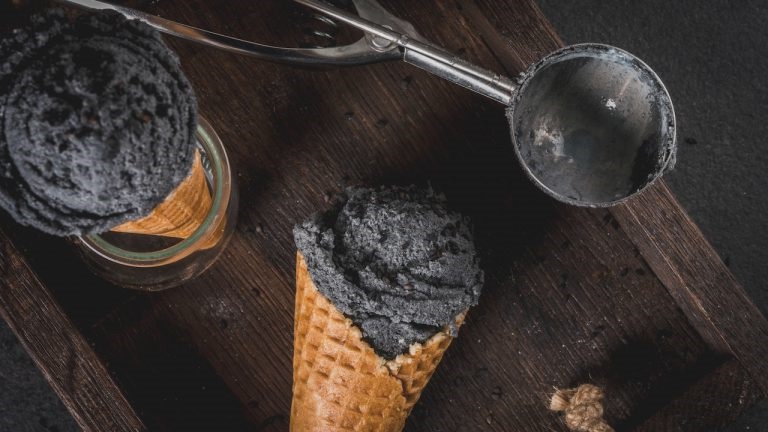Black Food - what is behind the trend?

Black food - the trend that originally came from Japan has also been in Germany for some time. No matter whether burgers, hot dogs or ice cream, hardly any food is safe from black colour. But is it even healthy to eat black food?
The selection of black food is now enormously large. From cupcakes and ice cream, burgers and noodles to black sushi, there is hardly any food that is not available in black. But there are not only coloured foods, but also those that are naturally black. And especially when it comes to fruit and vegetables, the colouring is often a great indicator that healthy ingredients are present.

What is behind the black colour?
Foods that are not naturally black are coloured by different colouring agents. These include, for example
- Sepia ink
- Activated carbon
- Iron II Gluconate
Noodles, for example, are usually dyed with sepia ink. Cheaply produced olives are sometimes dyed with iron-II-gluconate and for burger buns and bread, activated carbon is usually used.
IS BLACK FOOD HEALTHY?
Basically it can be said that neither the colouring with sepia ink nor with activated carbon or iron-II-gluconate is unhealthy. Activated carbon is even said to have detoxifying properties, which is why products dyed with carbon are often sold as "detox food". However, if you have a normally functioning liver and kidneys, you generally do not need to worry about the body's own detoxification. Sepia ink is also said to have a positive influence on health, and is used in homeopathy, for example to treat gynaecological problems and lung complaints. However, these healing effects have not been scientifically proven. Black colored food is therefore neither particularly healthy nor harmful and can therefore be eaten without hesitation. However, one should not expect a special healing effect.
Naturally black foods
The situation is different for foods that naturally contain black color, such as blackberries, blackcurrants or black salsify. This is because the black dye here consists of anthocyanins, which are secondary plant compounds with antioxidant properties.